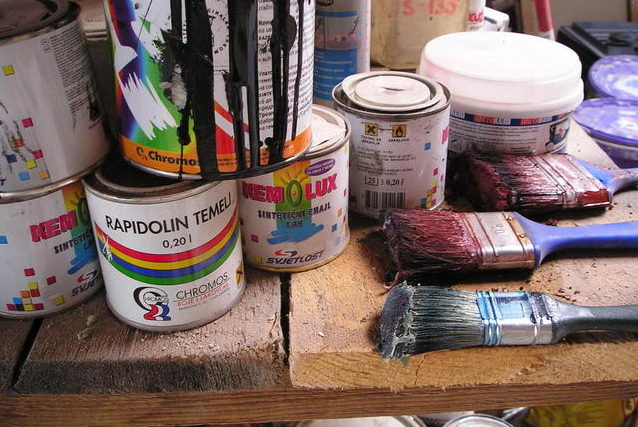For those who are dedicated to one or more hobbies, it’s essential to have a space in the house where you can go to focus, be inspired, and get creative. From oil painting to ballet to playing the drums, your space should be built to facilitate and nurture your craft while keeping you safe and making sure you’re creating the best version of what you came to do. Take a look at some flooring considerations for different types of hobby rooms.
Art Room Flooring
If you’re the artistic type, you’re probably well aware of the headache that can come from having carpet in a room where lots of water, liquids, and other messy substances are involved. Generally speaking, artists will have an easier time with harder surfaces that aren’t susceptible to being damaged by art supplies.
For example, hardwood is easy to clean, but may warp if it’s exposed to spills. Laminate can be a great option, as it’s cost-effective, durable, and easy to install. Tile is also a good option. However, keep in mind that tile can become more slippery when wet, which can present some hidden dangers in a messy space.
Music Room Flooring
One of the top considerations for a music room is how the design, structure, and surfaces of the room transmit sound. Musicians who use their space as a recording studio will typically want to stay away from surfaces that are too hard. These surfaces typically cause excess reverberation, allowing echoes of sound to carry farther and louder than desired.
Many musicians consider carpet to be the best option, as it absorbs excess sound and enhances acoustics. For those who want a firmer surface, cork is also a good option. It’s best to stay away from wood and other harder surfaces; however, strategic lying of rugs and carpet sections can help absorb sound in problem areas.
Dance Room Flooring
If you’re a dancer, you’ll need a type of flooring that’s smooth enough to allow a free flow of movement while being gentle enough to absorb some of the impact of your movement. Sprung floors are common in professional dance studios, which use hardwood or plywood with rubber or foam underneath to provide a “spring” mechanism for shock absorption. However, this can be pricey for a home dance room.
Many home dance studios use vinyl or laminate flooring, often laid on insulation. These options can be much more cost effective for the initial investment, and prove acceptable when it comes to being easy on the feet and knees while still being durable enough to stand the wear and tear.
If you’re ready to install flooring in your new hobby room, call us today at (407) 262-7979.


